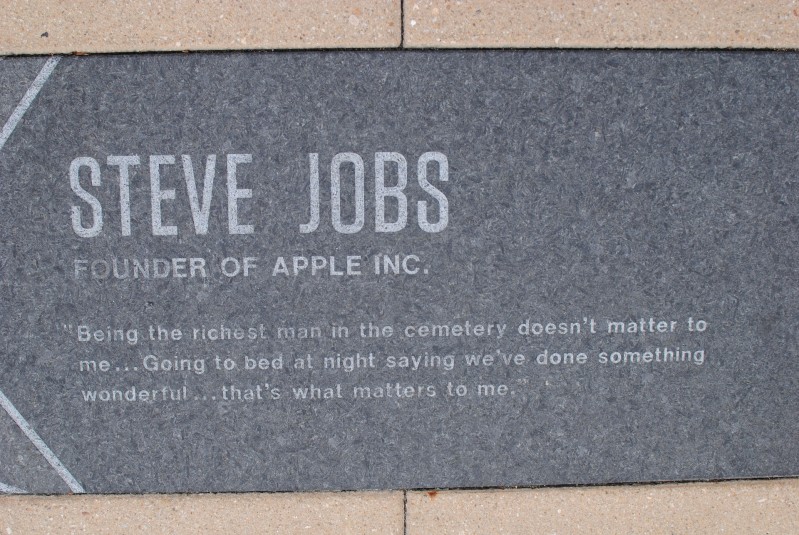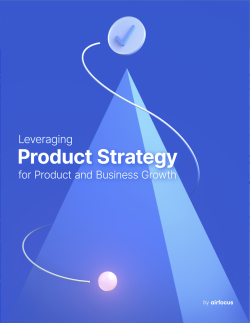Great ideas are just ideas unless well-executed, and execution requires a well-thought-out plan. This plan is called Product Strategy and it is extremely important for a product’s success. In this article, we will talk about product strategy and its importance, different types of product strategies, some popular product strategy frameworks, and lastly, how to select the right product strategy framework for your product.
What is product strategy?
Product strategy is the plan created by a company to bring a vision of a product to life, meaning, using the vision as a building block and planning how this vision will be realized. It is a translation of the business strategy and product vision into actionable context and tactics. It uses a roadmap to develop your product or feature. It includes all of the tasks that your team needs to complete to contribute to your business goals, such as identifying target markets, defining the unique value proposition of the product, and developing a plan for how the product will be positioned and marketed. The ultimate goal of product strategy is to help a business create, develop, and market products that are successful and profitable.
In other words, it is the map of how you intend to win the hearts and minds of your customers and organizations and achieve sustained success by continually delighting customers through innovation.
The "big picture" of a product is considered while developing a product strategy, which helps businesses to demonstrate why their product is necessary and how users will gain value from it.

From a product manager perspective, product strategy defines the "how" the product will come to life. It defines the what exactly and when of a product's journey. A goal-first approach is a product manager's best path towards innovation. Strategic planning takes place before you dive into the detailed work of building your roadmap and developing new features.
Now, let’s try to explain product strategy to a 5-year old kid:
“Imagine you have a toy that you really love and want to share with other kids. To do that, you need to think about who your toy would be best for, what makes it special compared to other toys, and how you will tell other kids about it so they want to play with it too. That's what product strategy is all about - it's a plan for how to make your toy successful by making sure it reaches the right kids and they love it as much as you do.”
Different types of product strategies
Product strategy is not “one-size fits all”. There are many different types of product strategies that businesses can use, and the right strategy for a given product will depend on a number of factors, such as the target market, the competition, and the goals of the business. Some common types of product strategies include:
Market Penetration: A market penetration strategy involves increasing sales of a product within an existing market, often by offering promotions or discounts to attract new customers. This strategy is great of new age startups that are trying to set their foot in the market.
Market Development: A market development strategy involves expanding into new markets or segments, either by introducing a product to a new market or by offering existing products to a new segment of customers. This strategy is great for market “Leaders” who are trying to grow their Serviceable Obtainable Market (aka SOM).
Product development: Product development strategy involves creating new or improved products to meet the changing needs of customers.
Cost Strategy: A cost strategy involves being the lowest-cost provider of a product or service in order to attract price-sensitive customers. This strategy aims to produce the best product at the most affordable cost. It evaluates the resources being utilized and identifies areas of production where money may be saved. This is really helpful for “Follower” competitors who are trying grab a market share from the “Leader”.
Differentiation Strategy: Differentiation strategy involves creating a product that is unique and differentiated from competitors in order to command a higher price and attract customers who value the product's unique features. This strategy looks away from the price and focuses on other ways to differentiate. This might be through unique functionality or by producing a luxury product using the best materials.
Focus Strategy: also known as “Niche strategy”, is a great way to cater to a specific group of customers by creating a product that solves a “very” specific problem. Focus Strategy could be great for early stage startups trying to find Product-market Fit.
Quality Strategy: this is a kind-of Differentiation strategy that focuses on bringing the highest quality product to the market. Even though the price is higher, customers are willing to pay for a luxury item they deem worthy of their investment.
Diversification: This strategy involves adding new products or services to a business's existing portfolio in order to reduce reliance on a single product or market.

Popular product strategy frameworks
Using a well-proven framework can reduce the time and effort to execute a product strategy. There are many popular frameworks that businesses can use to develop their product strategy, and the right framework will depend on the specific product and market.
Some common product strategy frameworks include:
1. Ansoff matrix: This framework is used to help businesses identify growth opportunities by analyzing the potential for existing products in existing markets, existing products in new markets, new products in existing markets, and new products in new markets.
2. The 5 Ps of marketing: This framework is used to help businesses identify and analyze the five key elements of the marketing mix: product, price, promotion, place, and people.
3. The 4 Ps of marketing: This framework is similar to the 5 Ps, but it focuses on the product, price, promotion, and place elements of the marketing mix.
4. The Boston Consulting Group matrix: This framework is used to help businesses evaluate the growth potential and strategic importance of different products or product lines within their portfolio.
5. The Porter's five forces model: This framework is used to help businesses understand the competitive forces in their market, including the threat of new entrants, the bargaining power of suppliers and buyers, the threat of substitutes, and the intensity of competitive rivalry.
6. The Product Lifecycle: This framework is used to help businesses understand the different stages that a product goes through, from its introduction to the market through its growth, maturity, and decline phases.
7. The SWOT analysis: This framework is used to help businesses identify their strengths, weaknesses, opportunities, and threats in order to develop a comprehensive product strategy.
How to select the right framework?

Frameworks are awesome, but it is even more critical to know which one you should use for your product. Just like for a fire truck knowing the route/s to the destination is great but knowing the fastest route is vital.
Choosing the right product strategy framework will depend on the specific product and market, as well as the goals of the business. Here are some steps that can help businesses select the right product strategy framework:
Identify the product and market: The first step is to clearly define the product and understand the market in which it will be sold. This includes understanding the target customers, the competition, and the unique value proposition of the product.
Define the business goals: The next step is to define the specific goals that the product strategy should help the business achieve. This could include goals related to market share, revenue, profitability, or other factors.
Evaluate the different frameworks: Once the product and market have been defined, the business can evaluate the different product strategy frameworks to determine which one is the best fit. This could involve comparing the frameworks based on their strengths and limitations, as well as how well they align with the business's goals.
Test and refine the selected framework: Once a framework has been selected, the business can use it as a starting point to develop a product strategy. This may involve testing and refining the framework to ensure that it is effective in helping the business achieve its goals.
Monitor and adjust the strategy: The final step is to continuously monitor and adjust the product strategy as needed to ensure that it remains effective in a changing market. This could involve making changes to the framework or implementing new tactics and techniques as needed.
Examples of some famous product strategies:
Nowadays, b-schools teach product strategies of famous companies to demonstrate how they created a successful business, how they left their competitors behind, and emerged victorious at the end. There are many examples of great product strategies that have helped businesses achieve success in the market. Here are a few examples:

Apple's product strategy: Apple is known for its successful product strategy, which involves creating innovative and user-friendly products that are carefully designed to meet the needs of its target customers. For example, Apple's iPhone revolutionized the smartphone market by offering a sleek design, easy-to-use features, and a wide range of apps and services.
Netflix's product strategy: Netflix is a great example of a company that successfully used product strategy to disrupt the traditional entertainment industry. Its streaming service offers a wide range of TV shows and movies that can be watched on demand, and it has continuously added new features and content to keep customers engaged.
Patagonia's product strategy: Patagonia is a clothing and outdoor gear company that has built a loyal customer base by using a product strategy that focuses on sustainability and environmental responsibility. Its products are made from high-quality materials that are designed to last, and the company has a strong commitment to reducing its environmental impact.
Amazon's product strategy: Amazon's product strategy has been key to its success as an online retailer. The company offers a wide range of products and services, including its Prime membership program, which offers free shipping and other benefits to customers. Amazon also uses data and analytics to understand customer preferences and develop new products and services.
The verdict
In the end, regardless of the product potential, identifying and implementing the right product strategy and framework could be one of the most important deciding factors for a product’s success. Take inspiration from previous success stories, hit-&-try various frameworks or use fail-fast approach, but identify the product strategy and framework that works for your company and product. As a product manager, this is one of the most impactful contribution you can make towards your company.

Vishal Chaudhary

Read also
Create effective product strategy







